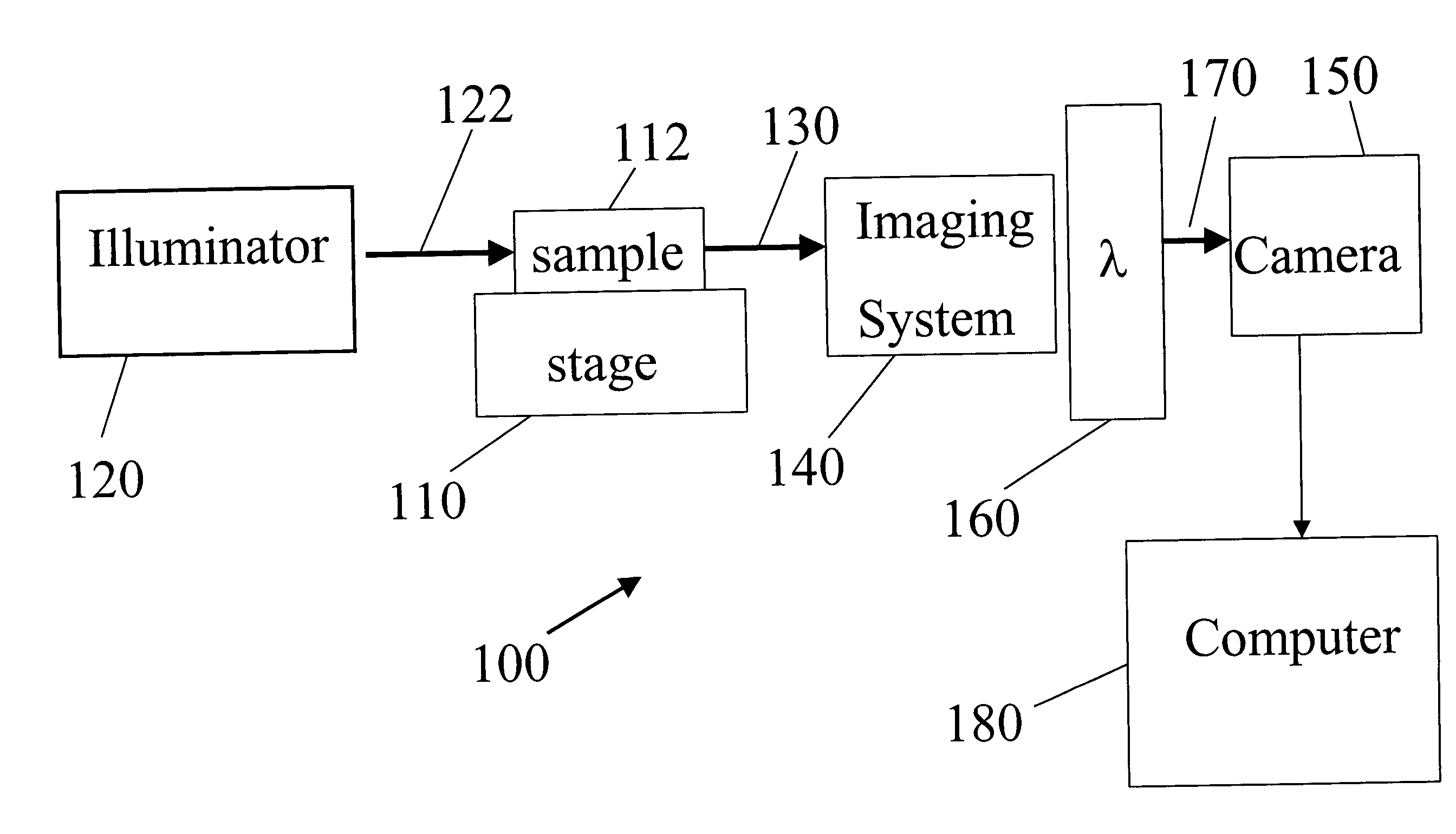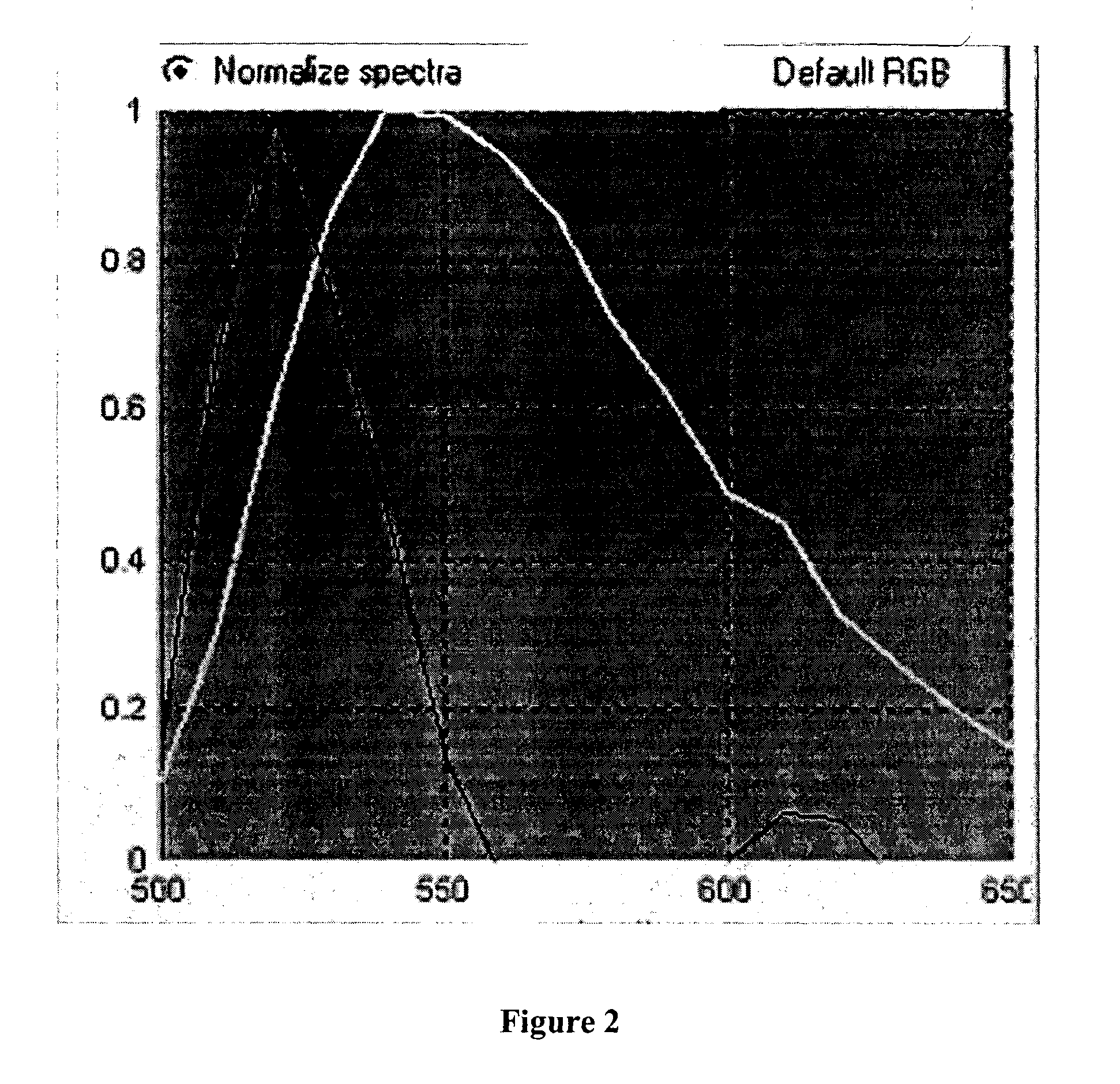Spectral imaging of deep tissue
a deep tissue and spectral imaging technology, applied in the direction of optical radiation measurement, spectral modifiers, height/levelling measurement, etc., can solve the problem of weak signals produced in such experiments
- Summary
- Abstract
- Description
- Claims
- Application Information
AI Technical Summary
Benefits of technology
Problems solved by technology
Method used
Image
Examples
Embodiment Construction
The invention features a method and apparatus for reducing the detection level of a target compound in deep tissue through spectral discrimination. An important aspect is that a beneficial result is obtained despite the low light levels involved.
A schematic diagram of a spectral imaging system 100 for imaging deep tissue is shown in FIG. 10. System 100 includes a sample holder 110 suitable for holding a specimen 112 having deep tissue. For example, the specimen may be a living organism, such as an animal or mammel. A target compound is bound to selected portions of deep tissue in the specimen. An illuminator 120 (e.g., a metal halide lamp or other lamp, a laser, an light emitting diode array, or any other source of electromagnetic radiation) directs excitation light 122 to the specimen to excite emission (e.g., fluorescence) from the target compound in the deep tissue. Typically, the excitation light will also cause the autofluoresence from the other components in the specimen. T...
PUM
 Login to View More
Login to View More Abstract
Description
Claims
Application Information
 Login to View More
Login to View More - R&D
- Intellectual Property
- Life Sciences
- Materials
- Tech Scout
- Unparalleled Data Quality
- Higher Quality Content
- 60% Fewer Hallucinations
Browse by: Latest US Patents, China's latest patents, Technical Efficacy Thesaurus, Application Domain, Technology Topic, Popular Technical Reports.
© 2025 PatSnap. All rights reserved.Legal|Privacy policy|Modern Slavery Act Transparency Statement|Sitemap|About US| Contact US: help@patsnap.com



